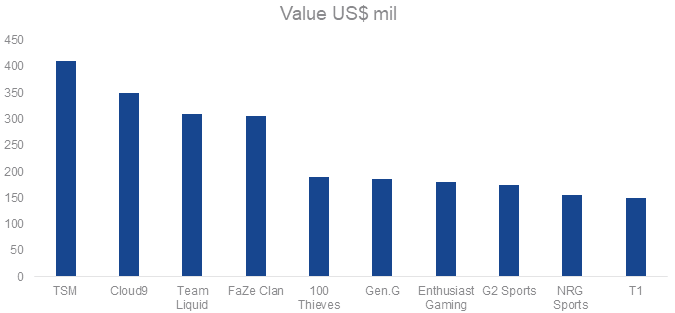The Teams
Esports teams are run and operated by companies, and they will participate in a number of different leagues.
Esports teams are run and operated by companies, and they will participate in a number of different leagues.
The number of players on any team depends on the game but the standard is five active players, such as for League of Legends. Just like regular sports, players have specific positions and different roles. These roles and positions have names like damage-dealer/asserter, healer/supporter, scouter/sneaker, defender/repeller, and specialist/magic user.
Teams search for talent in a number of different ways including finding players at the top of a leader board for a specific game, or players that have notable achievements in amateur tournaments. In addition, teams will organise esports academies to identify future talent. Many professionals have been discovered after live streaming themselves and showing off their skills to growing numbers of followers.
Some of the larger esports teams have dedicated training facilities for use by their team and others and producing video content. In 2018, Team Liquid opened a new training in Santa Monica, California. The facility not only provides a dedicated practice area for Team Liquid members but also houses the company’s content production team, 1UP Studios.
It has been common for teams to operate out of ‘gaming houses’ where players and coaching staff live and practice. The development of dedicated training facilities, such as Team Liquid’s, represents a shift away from the current model. The training facility has become a source of revenue for Team Liquid as it sold the naming rights to the facility to gaming PC brand Alienware for US$4.5 million.
Esports teams make the majority of their revenue from sponsorships and advertising. Like other professional leagues, advertising appears on player’s jerseys and the clothing they wear in their appearances on social and streaming platforms. It is worth highlighting that in the digital age, esports team sponsorships allow advertisers to target demographics that have been difficult to reach through standard marketing tactics. For example, millennials typically watch less television and listen to the radio less often than older demographics, increasing the importance of this type of marketing.
IT related sponsorships are also common in the esports industry as gaming equipment and accessories are on display during events. HP and Intel, for example, sponsor Activision Blizzard’s Overwatch League. As part of the agreement, competitors exclusively use HP’s OMEN gaming PCs and displays.
Another revenue stream for esports teams are prize pools, share of broadcast and ticket sales and merchandise, similar to traditional sports.
Numerous ex gaming champions have ownership shares in the teams. The graph below sets out Forbes valuation of the top ten team companies in December 2020.
 Source: Forbes, December 2020
Source: Forbes, December 2020
READ MORE:
Part 1: The ecosystem
Part 2: The publishers
Part 4: The fans
Related Insights
Published: 12 August 2021
IMPORTANT NOTICE




